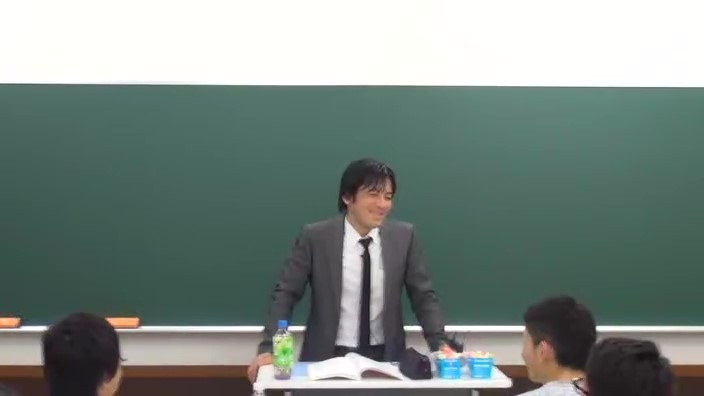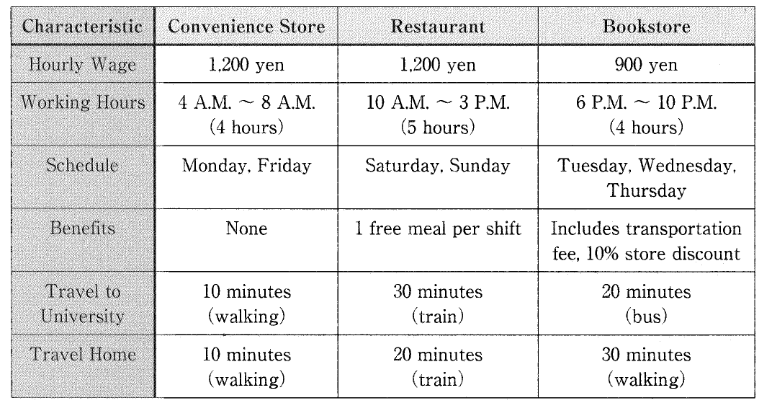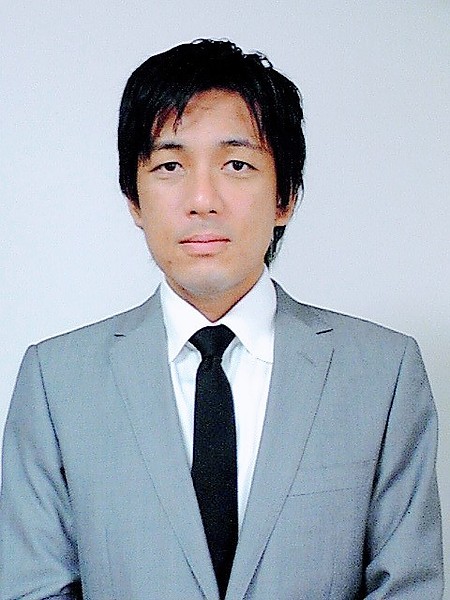英語力ランキング 福井県 突出の理由
本記事は独学・国内学習による
英検1級保持者が書きました。
現在の入試英文は最新の記事が出典になるので、
古い単語帳ではキーワードが漏れる傾向が見られます。
そのため、各社の英和辞典・単語集 改訂タイミングが
加速しています。
英単語という分野は既に
コーパスによる頻度分析、編集哲学、レイアウト、
においてアイディアが出尽くしているうえに、
飽和状態が続いていると言えるでしょう。
この現状で敢えて新たな1冊を世に問うからには、
類書を凌駕する編集哲学が具現化されて
いるはずです。
大学入試単語帳で最近出版された2冊は
「職人芸」を随所に味わえる「作品」です。
英単語 最前線2500【研究社】

<About the Author>
石橋草侍(いしばし・そうじ)
河合塾英語科講師。慶応義塾大学卒。対面授業と映像授業の両方で活躍。時おり教壇から降りて生徒の理解を1つ1つ確認しながら行われる丁寧な授業は幅広い生徒から好評を得ている。教材作成も長年担当。
里中哲彦(さとなか・てつひこ)
河合塾英語科講師。早稲田大学政治経済学部中退。首都圏を中心に、おもに英作文の授業を担当。河合塾マナビス(映像授業)では、ネイティブスピーカーとともに文法・語法・イディオム・口語などの講座を持ち、全国の受験生から支持をあつめている。著書多数『基礎からの英作文パーフェクト演習』(桐原書店)、『「英語口語表現」パーフェクト演習』(プレイス)、『入試英文法でほんとうに大切なこと』(学研プラス)など。
島田浩史(しまだ・ひろし)
河合塾英語科講師。大阪大学歯学部卒。河合塾での対面授業、河合塾マナビスでの映像授業だけでなく、文法テキストチーフや早慶大テキストチーフを歴任し、教材や模試作成、さらにはE-learningやAI教材の研究開発にも精力的に関わっている。『パラグラフリーディングのストラテジー』(河合出版・共著)、『Dual Effect英文法・語法』(河合出版・共著)など著書も多岐にわたり、『全国入試問題正解』(旺文社)の執筆も長年担当。
学入試 無敵の難単語PINNACLE 420【アルク】

<About the Author>
山崎竜成(やまざき・たつなり)
駿台予備学校英語科講師。著書に『知られざる英語の「素顔」 入試問題が教えてくれた言語事実47』(プレイス)がある。この本は英語講師の中で名著認定されている。模試の執筆等も多数担当。
駒橋輝圭(こまはし・てるたか)
東京大学文学部英語学英米文学専修課程卒業。 オンライン英語スクールE Cubed 代表。東進東大特進コース、駿台オンライン校などに出講。著書に『東大入試詳解25年 英語』『東大入試詳解20年 英語リスニング』(いずれも駿台文庫)。子ども時代を過ごした米国ミシガン州で英語を獲得した準ネイティブ・バイリンガル。英語感覚の的確な言語化に基づく授業で、初歩から最難関まで全レベルの学生から高い評価を得る。
萩澤大輝(はぎさわ・だいき)
神戸市外国語大学大学院博士課程を単位取得満期退学し、現在は近畿大学経営学部特任講師。専門は認知言語学。主な実績に『ジーニアス英和辞典 第6版』(大修館書店)の校閲・執筆協力のほか、翻訳書として『セミコロン かくも控えめであまりにもやっかいな句読点』(左右社)など。
上記2冊を含めて既存の主要英単語集から
超重要単語 algorithms が漏れています。
難関大学受験生は注意してください。
今回は東北大学2023 問1を検証してみましょう。
2023 東北大学 2/25,前期
【1】
次の英文を読み,下の問いに答えなさい。
‘You can’t code people, Millie. That’s basically impossible.’
I was eleven, and arguing with my older sister. ‘Then how do we all think?’
It was something I knew instinctively then, but would only come to understand properly years later: (A)the way we think as humans is not so different from how a computer program operates. Every one of you reading this is currently processing thoughts. Just like a computer algorithm, we ingest and respond to data ― instructions, information and external stimuli. We sort that data, using it to make conscious and unconscious decisions. And we categorize it for later use, like directories within a computer, stored in order of priority. The human mind is an extraordinary processing machine, one whose awesome power is the distinguishing feature of our species.
We are all carrying a supercomputer around in our heads. But despite that, we get tripped up over everyday decisions. (Who hasn’t agonized over what outfit to wear, how to phrase an email or what to have for lunch that day?) We say we don’t know what to think, or that we are overwhelmed by the information and choices surrounding us.
That shouldn’t really be the case when we have a machine as powerful as the brain at our disposal. If we want to improve how we make decisions, we need to make better use of the organ dedicated to doing just that.
Machines may be a poor substitute for the human brain ― lacking its creativity, adaptability and emotional lens ― but they can teach us a lot about how to think and make decisions more effectively. By studying the science of machine learning, we can understand the different ways to process information, and fine-tune our approach to decision making.
There are many different things computers can teach us about how to make decisions, which I will explore in this chapter. But there is also a singular, counter-intuitive lesson. To be better decision makers, we don’t need to be more organized, structured or focused in how we approach and interpret information. You might expect machine learning to push us in that direction, but in fact the opposite is true. As I will explain, algorithms excel by their ability to be unstructured, to thrive *amid complexity and randomness and to respond effectively to changes in circumstance. (B)By contrast, ironically, it is we humans who tend to seek conformity and straightforward patterns in our thinking, hiding away from the complex realities which machines simply approach as another part of the overall data set.
We need some of that clear-sightedness, and a greater willingness to think in more complex ways about things that can never be simple or straightforward. It’s time to admit that your computer thinks outside the box more readily than you do. But there’s good news too: it can also teach us how to do the same.
Machine learning: the basics
Machine learning is a concept you may have heard of in connection with another two words that get talked about a lot ― artificial intelligence (AI). This often gets presented as the next big sci-fi nightmare. But (C)it is merely a drop in the ocean of the most powerful computer known to humanity, the one that sits inside your head. The brain’s capacity for conscious thought, intuition and imagination sets it apart from any computer program that has yet been engineered. An algorithm is incredibly powerful in its ability to *crunch huge volumes of data and identify the trends and patterns it is programmed to find. But it is also painfully limited.
Machine learning is a branch of AI. As a concept it is simple: you feed large amounts of data into an algorithm, which can learn or detect patterns and then apply these to any new information it encounters. In theory, the more data you input, the better able your algorithm is to understand and interpret equivalent situations it is presented with in the future.
Machine learning is what allows a computer to tell the difference between a cat and a dog, study the nature of diseases or estimate how much energy a household (and indeed the entire National Grid) is going to require in a given period. Not to mention its achievements in outsmarting professional chess and Go players at their own game.
These algorithms are all around us, processing unreal amounts of data to determine everything from what film Netflix will recommend to you next, to when your bank decides you have probably been *defrauded, and which emails are destined for your junk folder.
Although they *pale into insignificance to the human brain, these more basic computer programs also have something to teach us about how to use our mental computers more effectively. To understand how, let’s look at the two most common techniques in machine learning: supervised and unsupervised.
Supervised learning
Supervised machine learning is where you have a specific outcome in mind, and you program the algorithm to achieve it. A bit like some of your maths textbooks, in which you could look up the answer at the back of the book, and the tricky part was working out how to get there. It’s supervised because, as the programmer, you know what the answers should be. Your challenge is how to get an algorithm to always reach the right answer from a wide variety of potential inputs.
How, for instance, can you ensure an algorithm in a self-driving car will always recognize the difference between red and green on a traffic light, or what a pedestrian looks like? How do you guarantee that the algorithm you use to help diagnose cancer screens can correctly identify a tumour?
This is classification, one of the main uses of supervised learning, in which you are essentially trying to get the algorithm to correctly label something, and to prove (and over time improve) its reliability for doing this in all sorts of real-world situations. Supervised machine learning produces algorithms that can function with great efficiency, and have all sorts of applications, but at heart they are nothing more than very fast sorting and labelling machines that get better the more you use them.
Unsupervised learning
By contrast, unsupervised learning doesn’t start out with any notion of what the outcome should be. There is no right answer that the algorithm is instructed to pursue. Instead, it is programmed to approach the data and identify its *inherent patterns. For instance, if you had particular data on a set of voters or customers, and wanted to understand their motivations, you might use unsupervised machine learning to detect and demonstrate trends that help to explain behaviour. Do people of a certain age shop at a certain time in a certain place? What unites people in this area who voted for that political party?
In my own work, which explores the cellular structure of the immune system, I use unsupervised machine learning to identify patterns in the cell populations. I’m looking for patterns but don’t know what or where they are, hence the unsupervised approach.
This is clustering, in which you group together data based on common features and themes, without seeking to classify them as A, B or C in a preconceived way. It’s useful when you know what broad areas you want to explore, but don’t know how to get there, or even where to look within the mass of available data. It’s also for situations when you want to let the data speak for itself, rather than imposing pre-set conclusions.
(Adapted from C. Pang, Explaining Humans: What Science Can Teach Us about Life, Love and Relationships)
(注)
*amid ~の中で
*crunch (大量のデータを)高速処理する
*defraud 金をだまし取る
*pale into insignificance (~に比べて)取るに足らない
*inherent 内在する
問1 下線部(A)について,人間の思考とコンピュータ・プログラムの動作の類似点を,本文に即して3つ日本語で指摘しなさい。
問2 下線部(B)を日本語に訳しなさい。
問3 下線部(C)のように主張する理由を,本文に即して日本語で説明しなさい。
問4 unsupervised learningに関係するものを,次の(ア)~(カ)の中から3つ選び,記号で答えなさい。
(ア) classifying
(イ) detecting trends in shopping
(ウ) differentiating between red and green traffic lights
(エ) grouping
(オ) no outcome in mind
(カ) preconceived outcome
問5 本文の内容から正しいと判断できる英文を,次の(ア)~(オ)の中から2つ選び,記号で答えなさい。
(ア) Machine learning tends to seek straightforward patterns in thinking, but humans do not.
(イ) Machine learning is a subset of artificial intelligence that deals with pattern detection via large data sets processed by algorithms.
(ウ) The human brain is a far less powerful information processing device than even basic computer programs.
(エ) Machine learning allows computers to defeat professional chess players, but not Go players.
(オ) We can learn how to make decisions more effectively by studying machine learning.
【2】
次の英文を読み,下の問いに答えなさい。
What makes a man handsome ― or beautiful? In past decades, the most famous icons of Western male beauty have been a rather narrow cohort ― blue-eyed stars of the screen like Brad Pitt or Leonardo DiCaprio come to mind. But the idea of what the “perfect” male looks like is evolving as the film and fashion worlds (1)embrace greater diversity, and the importance of representation is understood by global brands.
All over the world, the idealised standard of the *sculpted male shape (ア)has rarely reflected the average man’s body. However, social-media apps like TikTok (イ)are helping to change male beauty standards by showcasing men who previously would not have had a platform. British model, body-positive activist and TikTok star Ben James is changing the way we view larger men. In 2019, as a plus-sized model, he took part in (ウ)an advertising campaign for clothing brand Simply Be, appearing alongside other diverse models, and has worked with Ted Baker and Asos. James tells BBC Culture that his work “(エ)gives comfort and confident to boys and men alike. It tells them that they are wanted and they are worthy.”
While plus-sized female stars such as Lizzo and model Ashley Graham have been widely celebrated, their male (2)equivalents have been less in the spotlight. However, recently Rihanna’s lingerie brand Savage Fenty has helped to normalise and give a platform to larger men. Is this a sign of (A)a growing democratisation of male beauty? As Ben James puts it: “I’d like to see the industry improved by having different body shapes used in never-before-seen ways. Why can’t we have a ‘dad bod’ in a fragrance campaign, or a lead role in a film? The focus needs to shift from these unnaturally-attained physiques that even the actors themselves can’t sustain.”
Professor of anthropology at the University of Edinburgh, Alexander Edmonds, tells BBC Culture: “Due to the (3)legacy of slavery and colonialism, Western images of the beautiful man have always been very white, and in the past, there were fewer barriers for this to change but this may be happening now.” Black supermodels like Tyson Beckford and Alton Mason regularly grace the covers of GQ and other magazines, and the fashion world is gradually becoming more diverse, perhaps in part because global social changes such as the Black Lives Matter movement have made brands recognise the need for diversity.
“Stereotypical male aesthetics and behaviours are changing,” says Edmonds. “(B)They’re no longer the ideal for younger people. Generation Z *champion androgyny. This is happening a lot in East Asia, especially in South Korean pop culture.” In South Korea, the ideal has become more feminine, with the rise of K-Pop bands such as BTS, known for their vibrant hair and make-up. This type of beauty would be deemed unorthodox by traditional Western standards ― but is now widely sought after and highly influential in mainstream media.
And as with every ethnicity, East Asian beauty standards are also diverse. US-Korean model Dae Na says: “When I first started, there was a handful of Asian models but now you see multiples. Exponentially, it just kind of grew as the industry geared more towards Asian buyers or the Asian market.” With a large population of high-net-worth individuals in Asia, brands want to make models like Dae the face of their campaigns, to create a connection with consumers.
(中略)
And the conventional notion of the Mediterranean “tall, dark and handsome” type is still in demand, despite growing diversity. The phrase came to use in Europe in the early 1900s, and then was commonly used in Hollywood during the 1920s to describe Italian star Rudolph Valentino. It has remained a frequently used idiom, although the exact meaning and inference of “tall, dark and handsome” is now more closely (4)scrutinised and debated. Anthropologist Shafee Hassan tells BBC Culture: “Mediterranean men have a huge advantage in having dark eyebrows and dark facial hair. You can grow a full beard... dark hair is associated with *virility.” Beautiful by these standards is Italian actor Michele Morrone. From Puglia, Southern Italy, he was working until last year as a gardener in Rome and auditioning for acting roles. His life changed overnight when he was cast as the lead in Netflix film 365 Days, which became one of the most-watched films on the platform of 2020. He plays the smouldering Mafia boss Massimo, a figure of fantasy for his many fans.
Morrone tells BBC Culture: “I can’t deny my looks helped me in getting the role, because I fit the exact characteristics of Massimo; he’s tall with brown hair. But if they chose another actor, would it be the same? You can have the look but if you don’t know how to dance...” According to Morrone, he initially found it hard to get acting work because of his looks. “It’s very difficult for a good-looking guy to get work as a serious actor because people think to be an actor you should not be this good looking. I don’t know why they have this concept. I had a casting every week for 10 years. I did not get the roles.”
Yet despite the continuing success of the traditionally handsome, the norm of the male beauty standard is opening up. Older models have seen a significant rise in popularity. Of course, we’re used to conventionally handsome “silver foxes” such as Pierce Brosnan and George Clooney gracing our screens, but now older male models are frequently used in advertising campaigns and on *runways, among them Anthony Varrecchia, Wang Deshun (who became known as “China’s hottest grandpa”), Ron Jack Foley and Lono Brazil. The 87-year-old model René Glémarec appeared, along with his 86-year-old wife Marie-Louise, at Paris fashion week dressed in gender-neutral clothes made by his grandson Florentin Glémarec.
The male model Orlando Hobechi recently told The Guardian: “About four years ago I noticed an increase in the use of older models. Suddenly there was interest in older people’s stories.” Longer lifespans have made the difference, according to Hobechi. “Age isn’t the *turn-off it used to be. Over the last 30 years, we’ve seen cool young people age ― you can be older now and still cool and relevant... (C)People want to see people who look like themselves represented.”
(Adapted from Myra Ali, “What does the perfect man look like now?” BBC Culture, July 8, 2021)
(注)
*sculpted 彫りの深い
*champion androgyny 両性具有性(男女両方の特長を合わせもつこと)を擁護・支持する
*virility 男らしさ
*runway ファッションショーでモデルが歩く細長いステージ
*turn-off 興味を失わせるもの
問1 第2段落の下線部(ア)~(エ)のうち,文法的な間違いを含むものを1つ選び,記号で答えなさい。
(ア) has rarely reflected
(イ) are helping to change
(ウ) an advertising campaign
(エ) gives comfort and confident
問2 下線部(A)はどのような現象なのか,文章全体をふまえて日本語で説明しなさい。
問3 下線部(B)のTheyの内容に当てはまるものを,次の(ア)~(エ)の中から1つ選び,記号で答えなさい。
(ア) Western images of the beautiful man
(イ) black supermodels
(ウ) GQ and other magazines
(エ) brands
問4 Michele Morroneについて,本文の内容と一致するものを,次の(ア)~(エ)の中から1つ選び,記号で答えなさい。
(ア) He had some real-life experience of being a mafia boss in Southern Italy.
(イ) He is categorized into the Mediterranean “tall, dark and handsome” type.
(ウ) He played a role of gardener in his debut Netflix movie 365 Days.
(エ) He is one of the older actors, who are gaining more popularity.
問5 下線部(C)は具体的に何を主張しているのか,本文に即して日本語で説明しなさい。
問6 下線部(1)~(4)の意味と最も近い意味をもつ語を,それぞれ(ア)~(エ)の中から1つ選び,記号で答えなさい。
(1) embrace
(ア) enlist
(イ) require
(ウ) accept
(エ) emerge
(2) equivalents
(ア) connections
(イ) celebrities
(ウ) equalities
(エ) counterparts
(3) legacy
(ア) tradition
(イ) importance
(ウ) reason
(エ) revolt
(4) scrutinised
(ア) defined
(イ) deduced
(ウ) examined
(エ) related
【3】
Read the conversation below between Charles and Rebecca and answer questions 1) and 2) at the end of the passage.
Charles: Hi Rebecca, can I ask you a favor?
Rebecca: Sure, what can I do for you?
Charles: You work at the coffee shop on campus, don’t you? Do you think you could ask your boss if he is hiring?
Rebecca: Sure! Are you looking for a job? I thought you got a loan to help pay for tuition.
Charles: Well, I thought I could get one, but it ( ① ) that my father makes too much money, so I didn’t qualify.
Rebecca: Oh, well then can’t you ask your father to help pay for some of your tuition?
Charles: I suppose I could, but my brother is also in college right now, and I don’t want to burden him. I decided that it would be better for me to get a part-time job anyway. If I take out an expensive loan now, I will ( ② ) paying a lot of interest on the loan, so if possible, I want to pay for school myself.
Rebecca: Wow, that’s certainly ambitious of you. But I’m worried that you’ll have to work too much and won’t be able to focus on your studies.
Charles: I know what you mean, and I think you’re right that it will be very difficult at first. But if I can just ( ③ ) the first year, I think I will be okay. The first year we have a lot of classes, but we have far fewer the second year, and in my department, third- and fourth-year students do a lot of independent research, which means that I can decide my own schedule.
Rebecca: That might be true, but just because you have control of your schedule, that doesn’t mean that you have less work to do. Are you sure you’re going to have the time to do everything?
Charles: I think so! If I don’t participate in any club activities and focus just on studying and work, I should be fine.
Rebecca: You aren’t going to do any club activities? Didn’t the soccer club offer to make you a starting player for their team?
Charles: They did, but I haven’t given them an answer yet...
Rebecca: You might want to tell them soon. I think they are expecting you to join the team because of your experience playing in high school.
Charles: You’re right, I had better ( ④ ) their offer soon so that they have enough time to find a replacement.
Rebecca: I suppose that’s the best thing for the soccer team, but... don’t you think you should spend at least a little bit of your time doing something you like?
Charles: I’ll have plenty of time for that after school.
Rebecca: I guess...
1) What phrase most likely goes in each of the blanks? Choose the letter of the best answer and write it on your answer sheet.
①
(A) turned through
(B) came through
(C) turned out
(D) came by
②
(A) wind up
(B) get up
(C) have up
(D) make up
③
(A) get on
(B) come up
(C) get through
(D) make across
④
(A) take on
(B) flip over
(C) go out
(D) turn down
2) Imagine that you want to have a part-time job during your first year at university but only the following three are available. Which one would you choose and why? Give at least three reasons based on the information in the chart and support each reason with at least one personal detail. Your response should be written in English and at least 80 words long.
【4】
次の文章を読み,下の問いに答えなさい。
現代の学びは急速に変わりつつある。(A)知識は人に学ばなくても,本を読まなくても,インターネットですぐに入手できる。だから,学生は知識を学びに大学に来る必要はない。では,何を学びに来るのか。いまの時代にわかっていることではなく,わからないことは何かを知るために,そして自分と異なる個性を持った人との出会いを通して自分の可能性と向き合うために来るのである。インターネットを通じて既知のものは手に入るが,未知のものはわからない。この世界はまだ多くの未知のことが眠っている。それは,適切な問いを立てなければ見えてこない。
大学の教員とは,自らの研究を通じてその問いを立て続けてきた経験者である。それらの問いに対する答えはインターネットではなく,それぞれの研究者の中にある。それを学んで自分の問いを立て,自分の答えを見つける。それが自分のアイデンティティになり,自分の可能性を導いてくれる。(B)大学の学びとは,用意された問いと答えの中に自分を見つけるのではなく,未知の世界の中に未知の自分を発見する作業なのだ。大学という環境,教職員,そして学友たちがそれを後押ししてくれる。
だから,大学の教員は自分の学問分野の中でこれまで立てられた問いや答えとともに,自分独自の問いと答えを持っていなければならない。大学の教員には教員免許はない。研究者であるという自負と実績があるだけである。(C)その理由は,小中高の教育のように既存の知識を教えるのではなく,未知の答えにたどり着く方法を教え,未知の自分に出会う道へと学生を送り出すことが求められているからだ。そのために,大学の教員は常に自分の学問分野の広がりと深さについて熟知し,自分も未知への挑戦を続けていなくてはならない。大学教育で学んだ学生は,これから社会に順応するだけではなく,これから新しい社会や世界を作っていかねばならない。大学はその可能性を広げる場である。
(山極寿一『京大というジャングルでゴリラ学者が考えたこと』より一部改変)
問1 下線部(A)の英訳として最も適切な文となるように,次の(ア)~(コ)から8つを選び,並べ替えて,英文を完成させなさい。解答は空欄( ① ) ( ② ) ( ③ )に入るものを記号で答えなさい。同じ選択肢を複数回使用しないこと。
We can easily obtain knowledge on the Internet ( ) ( ① ) ( ) learn ( ② ) ( ) ( ③ ) ( ) ( ).
(ア) books (イ) without (ウ) to (エ) and
(オ) from (カ) or (キ) others (ク) having
(ケ) read (コ) have
問2 下線部(B)を英語に訳しなさい。
問3 下線部(C)の内容から正しいと判断できるものを,次の(ア)~(エ)の中から1つ選び,記号で答えなさい。
(ア) University teachers are asked to help students by teaching them how to answer unsolved questions and guide them to discovering unknown parts of themselves.
(イ) University teachers are asked to send away students who have answered unsolved questions and guided themselves to discovering unknown parts of themselves.
(ウ) University teachers are asked to help students by teaching them the answers to unsolved questions and how to journey by themselves.
(エ) University teachers are asked to send away students who have learned the answers to unsolved questions and know how to journey by themselves.
【解答例1】
問1
・指示,情報,外からの刺激などのデータを吸収して,それに反応するという点。
・データを整理して,それを活用して意識的に,あるいは無意識のうちに判断をするという点
・のちに活用できるようにデータを分類して,優先順位の高い順に保存しておくという点。
問2 これに対して,皮肉なことに,思考において整合性と単純なパターン化を求めがちで,機械ならばデータセット全体の別の一部として単純処理するはずの,複雑な現実から目を背けているのは我々人間なのである。
問3 コンピュータ・プログラムのアルゴリズムには,大量のデータを高速処理して,傾向やパターンを見つける能力があるが,人間の脳にはこれに勝る,意識的な思考,直観,想像力を働かせる能力があるため。
問4 (イ),(エ),(オ)問5 (イ),(オ)
《出典》Camilla Pang "Explaining Humans: What Science Can Teach Us About Life, Love and Relationships"
【解答例2】
問1 (エ)
問2 従来は,西洋における男性の美の基準は,植民地化政策のせいもあって,青い目の長身の白人というような画一的なものであったが,現在では,美の基準は,時代に応じて多様化して,人種,年齢,体形,男らしさなどにはとらわれなくなった。
問3 (ア)問4 (イ)
問5 従来は否定的なイメージを持たれがちな年齢,体形,人種の人たちが活躍しているのを見ると,元気をもらえるから。
問6(1) (ウ)(2) (エ)(3) (ア)(4) (ウ)
《出典》Myra Ali "What does the perfect man look like now?",BBC Culture, July 8, 2021
【解答例3】
1)① (C)② (A)③ (C)④ (D)
2)
・Convenience Store
I would choose to work part-time at the convenience store for the following three reasons. First, its hourly wage is one of the highest of the three. I need to save a lot of money to study abroad while I am at university. Second, its working hours are four to eight in the early morning. This allows me to work before attending classes. I engage in volunteer activities after class. Finally, it only takes 10 minutes to walk from home to the store and from there to my university. This way I can save a lot of time.
・Restaurant
I would work at the restaurant. I have a number of reasons for saying this. First, its work schedule is weekends only (Saturday and Sunday). I will be too busy with my studies on weekdays to have a part-time job. Next, one free meal is very attractive to me. I love eating, so I will be always looking forward to the next meal I will be served. Then, its working hours are from 10a.m. to 3p.m. I can go out with my friends after the job. Above all, I can earn 6,000 yen a day, which is the highest of the three. This helps me a lot because I have to support myself.
・Bookstore
I would like to choose the bookstore. It is true that its hourly wage is the lowest of the three, but it has a few advantages for me. Firstly, its working hours fit me best. I can work after class. Secondly, I can make full use of 10% store discount. This is because I am a great book lover and I buy a lot of books. Thirdly, the 30 minutes’ walk hone from work at night will help me to have a good night’s sleep for my health.
【解答4】
問1 (イ),(ク),(ウ),(オ),(キ),(カ),(ケ),(ア)
問2 In learning at college, you should try to find unexplored parts of yourself in a new world rather than to find yourself in prepared questions and answers.
問3 (ア)
《出典》山極寿一「京大というジャングルでゴリラ学者が考えたこと」pp.161-162,一部改変,9784022951502 朝日新聞出版(2021)
● way of thinking: 考え方
● humans: 人間
● computer program: コンピュータプログラム
● operate: 動作する
● ingest: 取り込む
● respond: 応答する
● data: データ
● instructions: 指示
● information: 情報
● external stimuli: 外部からの刺激
● sort: 整理する
● conscious: 意識的な
● unconscious: 無意識の
● decisions: 決定
● categorize: 分類する
● directories: ディレクトリ
● stored: 保存された
● order of priority: 優先順位
● human mind: 人間の心
● processing machine: 処理機械
● awesome power: 素晴らしい力
● distinguishing feature: 特徴
● species: 種
● machine learning: 機械学習
● counter-intuitive: 直感に反する
● lesson: 教訓
● organized: 組織された
● structured: 構造化された
● focused: 焦点を当てた
● approach: アプローチ
● interpret: 解釈する
● effectively: 効果的に
● changes in circumstance: 状況の変化
● drop in the ocean: 海の一滴
● powerful computer: 強力なコンピュータ
● humanity: 人類
● conscious thought: 意識的な思考
● intuition: 直感
● imagination: 想像力
● sets apart: 区別する
● programmed: プログラムされた
● crunch: 計算する
● huge volumes of data: 膨大なデータ
● identify: 特定する
● trends: トレンド
● patterns: パターン
● engineered: 設計された
● incredibly powerful: 非常に強力な
● limitations: 制限
「人をコード化することはできない、ミリー。それは基本的に不可能だよ。」私は11歳で、姉と議論していました。「じゃあ、なんで私たちはみんな考えることができるの?」それは私が本能的に知っていたことで、しかし、後になって正しく理解するようになったことでした:(A)私たち人間が考える方法は、コンピュータプログラムの動作とあまり変わりません。これを読んでいるすべての人は現在、思考を処理しています。コンピュータアルゴリズムのように、私たちはデータ―指示、情報、外部の刺激を摂取し、それに応じて反応します。私たちはそのデータを整理し、意識的および無意識的な決定を行うために使用します。そして、後で使用するためにそれをカテゴライズします。これはコンピュータ内のディレクトリのように、優先順位で保存されています。人間の心は非常に優れた処理機械であり、その素晴らしい力は私たちの種の特徴的な特徴です。私たちは頭の中にスーパーコンピュータを持ち歩いています。しかし、それにもかかわらず、私たちは日常の決定でつまずいています。(誰もがその日に何を着るか、メールをどのように表現するか、その日の昼食に何を選ぶかで悩んだことがあるでしょうか?)私たちは何を考えるか分からないと言ったり、私たちを取り巻く情報と選択肢に圧倒されていると言います。私たちが利用できる脳と同じくらい強力な機械があるとき、そのようなことは実際には起こるべきではありません。意思決定の方法を改善したいのであれば、そのために専念している臓器をより良く利用する必要があります。機械は人間の脳の代替品とは言えません。創造性、適応性、感情のレンズが不足していますが、効果的に考え、意思決定する方法については多くのことを教えてくれます。機械学習の科学を研究することで、情報を処理するさまざまな方法を理解し、意思決定へのアプローチを微調整できます。機械が意思決定について私たちに教えてくれることはたくさんあります。この章で探求するでしょう。しかし、唯一の逆説的な教訓もあります。より良い意思決定者になるためには、アプローチや情報の解釈においてより整然で構造化され、焦点を絞った方が良いと期待するかもしれませんが、実際には逆です。私が説明するように、アルゴリズムは非構造的であり、複雑さとランダムネスの中で繁栄し、状況の変化に効果的に対応します。 (B)対照的に、皮肉なことに、我々人間は思考において一貫性と単純なパターンを求めがちであり、機械は単に全体のデータセットの別の部分としてアプローチする複雑な現実から遠ざかっています。私たちはその明確な洞察力と、単純または簡単であるはずのないことについてもっと複雑な方法で考える意欲が必要です。あなたのコンピュータは、あなたよりも簡単に枠外の考え方をすることを認める時がきたのです。しかし、良いニュースもあります。それは私たちにも同じことを教えてくれる可能性があるのです。
機械学習:基礎機械学習は、人工知能(AI)と一緒によく話題にされる言葉と関連して聞いたことがあるかもしれません。これはしばしば次の大きなサイエンスフィクションの悪夢として提示されますが、(C)それは本質的には人類が知る中で最も強力なコンピュータの一滴に過ぎません、それはあなたの頭の中に座っています。脳の意識的な思考、直感、想像力の能力は、これまでに設計されたどんなコンピュータプログラムとも異なります。アルゴリズムは、プログラムされたトレンドやパターンを特定することに非常に強力ですが、同時に痛みに満ちています。機械学習はAIの分野です。概念としてはシンプルです。大量のデータをアルゴリズムに入力し、それが学習またはパターンを検出し、それを将来の新しい情報に適用できるようにします。理論的には、入力するデータが多いほど、アルゴリズムは将来提示される同等の状況を理解し解釈する能力が向上します。機械学習によってコンピュータは猫と犬の違いを教え分けたり、疾病の性質を研究したり、家庭(そして実際には全国の電力網)が将来的にどれくらいのエネルギーを必要とするかを推定したりすることができます。プロのチェスや囲碁のプレーヤーに勝る成績を収めることも忘れてはいけません。これらのアルゴリズムは私たちの周りにあり、Netflixが次にお勧めする映画や、銀行があなたがおそらく詐欺に遭ったと判断するタイミング、そしてどのメールが迷惑メールフォルダに行くかを決定するために非現実的な量のデータを処理しています。これらは人間の脳に比べれば無意味ですが、これらのより基本的なコンピュータプログラムも私たちが自分のメンタルコンピュータを効果的に使用する方法について教えてくれるものがあります。それを理解するために、機械学習の中で最も一般的な2つのテクニック、教師あり学習と教師なし学習を見てみましょう。教師あり学習教師あり機械学習では、特定の結果を心に描き、アルゴリズムをそれを達成するようにプログラムします。数学の教科書のいくつかのように、本の後ろで答えを見ることができ、難しいのはそこに到達する方法です。これはプログラマとして、あなたが答えるべきであることを知っています。あなたの課題は、アルゴリズムが様々なポテンシャルな入力から常に正しい答えに到達する方法です。たとえば、自動運転車のアルゴリズムが常に信号機の赤と緑の違いを認識し、歩行者がどのように見えるかをどのように保証しますか?癌のスクリーニングに役立つアルゴリズムが腫瘍を正しく識別できることをどのように保証しますか?
これは分類です。教師あり学習の主な用途の1つであり、基本的にはアルゴリズムに何かを正しくラベル付けさせ、現実のさまざまな状況で常に実証し(そして時間とともに改善する)ことです。教師あり機械学習は非常に効率的に機能し、あらゆる種類のアプリケーションがありますが、根本的には非常に速いソーティングおよびラベリングマシンに過ぎません。
非監督学習対照的に、非監督学習は結果がどうなるべきかという概念を全く持たずに始まります。アルゴリズムが追求すべき正解はありません。その代わりに、データにアプローチし、その固有のパターンを識別するようプログラムされています。たとえば、特定の有権者や顧客のデータがあって、その動機を理解したい場合、非監督機械学習を使用して、行動を説明するのに役立つ傾向を検出し示すかもしれません。ある年齢層の人々は特定の場所で特定の時間に買い物をするのでしょうか?この地域の人々を結ぶものは何で、なぜその政党に投票したのでしょうか?私自身の仕事では、免疫系の細胞構造を探求しており、非監督学習を使用して細胞集団のパターンを識別しています。私はパターンを探していますが、それが何であり、どこにあるのかはわからないため、非監督アプローチを採用しています。これはクラスタリングであり、共通の特徴やテーマに基づいてデータをグループ化するものであり、あらかじめA、B、Cといった分類を行おうとはせずにいます。何を探索したいかは分かっているが、どうやってそこに行くか、または利用可能なデータの中でどこを見るべきかが分からない場合に有益です。また、データ自体に発言させたいときや、あらかじめ設定された結論を押し付けずに済む場合にも役立ちます。
(C. Pang氏の著書「Explaining Humans: What Science Can Teach Us about Life」より)
【一言コメント】
【模範答案】
問1
・指示,情報,外からの刺激などのデータを吸収して,それに反応するという点。
・データを整理して,それを活用して意識的に,あるいは無意識のうちに判断をするという点
・のちに活用できるようにデータを分類して,優先順位の高い順に保存しておくという点。
★ 2文後のJust like a comutre algorithm, に着目できるかを問う易しめの問題でした。
問2 これに対して,皮肉なことに,思考において整合性と単純なパターン化を求めがちで,機械ならばデータセット全体の別の一部として単純処理するはずの,複雑な現実から目を背けているのは我々人間なのである。
By contrast, ironically, it is we humans who tend to seek conformity and straightforward patterns in our thinking, hiding away from the complex realities which machines simply approach as another part of the overall data set.
★ ironically の存在理由が理解できるかは訳出には表れなくとも重要で悩ましい問題です。このパラグラフのcounter-intuitive「直観にそぐわない」を言い換え。次の「直観的理解」を読者との共通前提として、counter-intuitiveと言ってます。
【直観的理解】
人間の思考プロセス= 柔軟性があり複雑
アルゴリズムの思考プロセス= 統計処理で直線的
【実際】
人間の思考プロセス= 整合性のある単純パターンを求める
アルゴリズムの思考プロセス= 全てのデータを処理する
よって、日本語「皮肉なことに」の位置は「我々人間」の直前にしたい。
★in our thinking:「思考において」
このパラグラフ第1文 to make decisions の言い換えであるため、
「情報処理における」
「意思決定の思考プロセスにおいて」
などと工夫が求められるはず。
★ 解答例の「パターン化を求めがち」は誤訳。
「規則性を求める傾向がある」とすべき。
問3コンピュータ・プログラムのアルゴリズムには,大量のデータを高速処理して,傾向やパターンを見つける能力があるが,人間の脳にはこれに勝る,意識的な思考,直観,想像力を働かせる能力があるため。
★「勝る」とは言及していないので無難とは言えない。
意識的思考・直観・想像力という脳の特性は強みであると同時に弱みでもあるので、越権判断になる。後にアルゴリズムの特性として、powerful, limited の両サイド併記も考慮したい。 ここは、アルゴリズムは脳の特性を持っていない点で既存のコンピューターの派生であり、イノベーションではないという趣旨を汲み取れるかを問う問題と理解すべき。
今後も英語学習に関わる情報、体験談を発信していきます。











